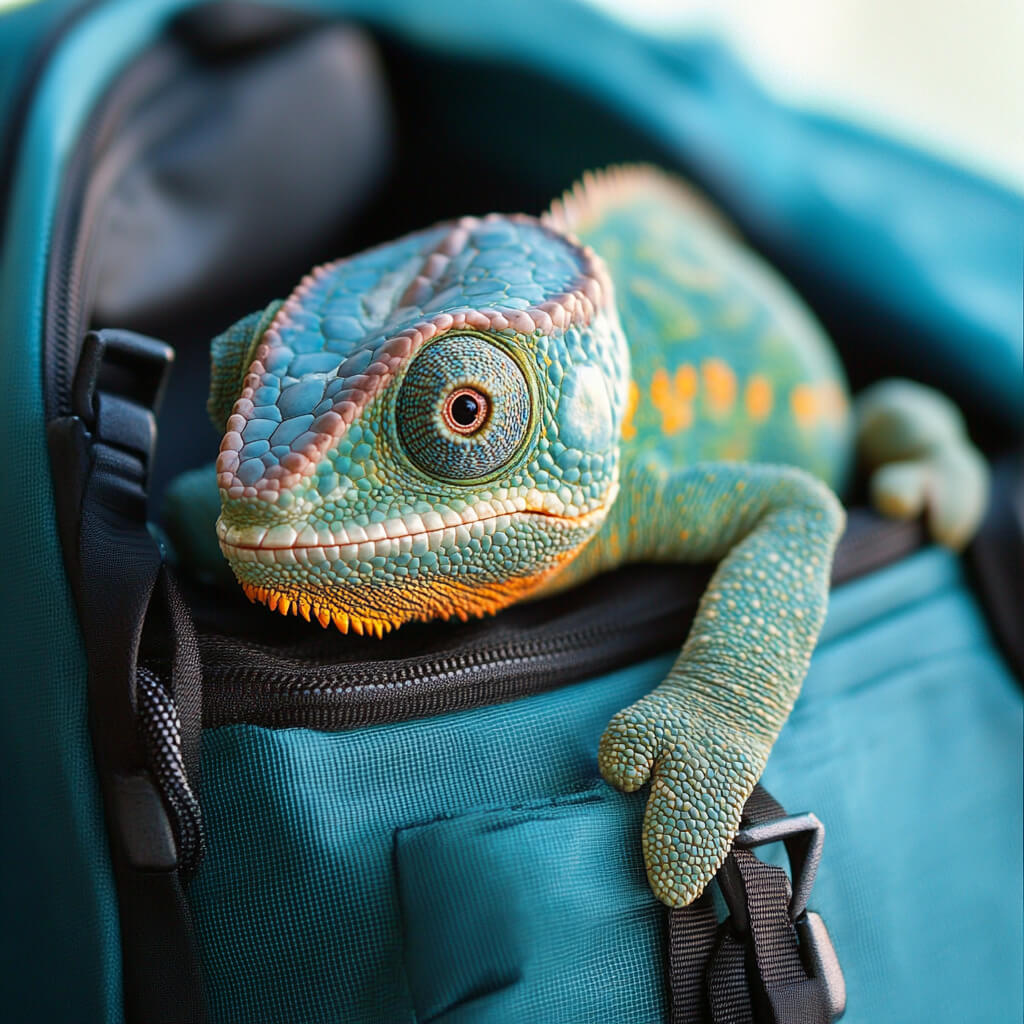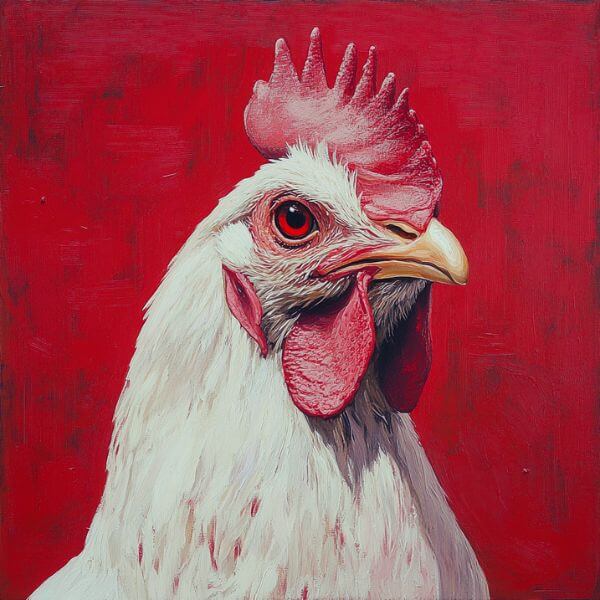Chameleons are fascinating creatures that have captured the hearts of exotic pet enthusiasts worldwide. With their color-changing abilities and unique appearance, it’s no wonder they’ve become popular pets.
However, these remarkable reptiles come with a set of challenges that make many wonder “are chameleons easy to care for”?
Let’s dive into the world of chameleon care and explore why these captivating creatures are often considered challenging pets.
Specialized environmental requirements
Creating a mini-jungle (not your average fish tank)
One of the primary reasons chameleons are considered difficult to care for is their need for a specialized habitat.
It’s not as simple as throwing some wood chips in a terrarium and calling it a day.
Unlike some reptiles that can thrive in simple terrariums, chameleons require a more complex setup:
- Enclosure size: Chameleons need spacious, tall enclosures to climb and explore.
- Ventilation: Proper airflow is crucial to prevent respiratory issues.
- Lighting: UVB lighting is essential for vitamin D synthesis and overall health.
- Temperature gradient: Providing proper basking spots and cooler areas is vital.
- Humidity control: Most species require high humidity levels, necessitating regular misting.
Here’s a quick breakdown of the environmental needs:
| Requirement | Details |
| Enclosure size | Minimum 2x2x4 feet for most adult chameleons |
| Temperature | Basking spot: 85-95°F (29-35°C), Ambient: 70-80°F (21-27°C) |
| Humidity | 50-70% (varies by species) |
| UVB lighting | 5.0 or 10.0 strength, replaced every 6 months |
| Misting | 2-3 times daily, or automated misting system |
Species-specific care: Not all chameleons are created equal
Different chameleon species have varying care requirements, adding another layer of complexity to their care:
Chameleon veiled care: The hardy climber
Veiled chameleons are often recommended for beginners due to their hardiness:
- Tolerate slightly lower humidity (40-60%)
- Require larger enclosures due to their size
- Need a variety of climbing branches and plants
How to care for a panther chameleon: The colorful sensitive
Panther chameleons are known for their vibrant colors but require more precise care:
- Higher humidity needs (60-80%)
- More sensitive to temperature fluctuations
- Require a diverse diet of gut-loaded insects
Comparing “how to care for ambanja panther chameleon“ vs. “how to care for ambilobe panther chameleon“
Even within the panther chameleon family, care can vary:
| Aspect | Ambanja | Ambilobe |
| Size | Slightly smaller | Larger |
| Colors | Reds and oranges | Blues and greens |
| Temperature | Prefers slightly cooler | Tolerates higher temps |
Dietary complexities: The insect buffet
Chameleons are insectivores, which means their diet consists entirely of live insects. This presents several challenges:
- Variety is key: A mix of crickets, roaches, worms, and flies is necessary for balanced nutrition.
- Gut-loading: Insects must be fed nutritious foods before being offered to the chameleon.
- Supplementation: Dusting insects with calcium and vitamin powders is crucial.
- Feeding schedule: Adults typically eat every other day, while juveniles need daily feeding.
Hydration is another critical aspect of chameleon care.
Many chameleons don’t recognize standing water, so misting the enclosure or providing a dripper system is essential for proper hydration.
Health vulnerabilities: Keeping your chameleon in tip-top shape
Chameleons are prone to several health issues in captivity:
- Metabolic bone disease: Due to insufficient UVB or calcium
- Respiratory infections: From poor ventilation or incorrect humidity
- Parasites: Often from infected feeder insects
- Dehydration: Can occur quickly if proper hydration isn’t maintained
Early detection of health issues is challenging, as chameleons are masters at hiding illness.
Regular check-ups with a reptile veterinarian are crucial for maintaining your chameleon’s health.
Handling and socialization: The no-cuddles policy
Unlike many pets, chameleons generally don’t enjoy being handled. Here’s how to take care of chameleon without causing stress involves:
- Minimizing handling to necessary occasions (cleaning, vet visits)
- Moving slowly and calmly around their enclosure
- Providing plenty of hiding spots and visual barriers
Stress management is crucial in chameleon care.
Signs of stress include dark coloration, refusal to eat, and aggressive behavior.
Time and resource commitment: The hidden costs of chameleon care
Caring for a chameleon is both a time and financial investment:
Daily tasks:
- Misting (2-3 times)
- Feeding
- Monitoring temperature and humidity
Weekly tasks:
- Deep cleaning of the enclosure
- Plant care
- Feeder insect care
Initial setup costs can range from $300-$500, with ongoing monthly expenses of $50-$100 for food, supplements, and utilities.
Common misconceptions and learning curve
There are many myths surrounding chameleons care:
Myth 1: Chameleons change color to match their surroundings.
Fact 1: Color changes are primarily due to mood, temperature, and communication.
Myth 2: Chameleons are low-maintenance pets.
Fact 2: They require specialized care and attention to thrive.
Continuous learning is essential for proper chameleon care.
Staying updated on chameleon care info through reputable sources is crucial for providing the best care possible.
Essential resources for chameleon owners
For those committed to chameleon care, here are some valuable resources:
- Chameleon care guide: “The Chameleon Handbook” by Philippe de Vosjoli
- Online forums: Reputable reptile forums for peer advice and support
- Local herpetological societies: Great for networking and learning
Expert tip: Always consult with a reptile veterinarian for personalized advice on how to care for chameleon.
Conclusion: Are chameleons right for you?
So, are chameleons hard to care for? The answer is: they can be.
Chameleons require specific environmental conditions, a varied diet, and careful monitoring.
They’re not ideal for first-time reptile owners or those seeking a low-maintenance pet.
However, for those willing to invest the time, effort, and resources, chameleons can be incredibly rewarding pets.
Their unique behaviors and stunning appearances make them a joy to observe and care for.
Before deciding to bring a chameleon into your home, carefully consider the challenges and commitments involved.
With proper research, preparation, and dedication, you can provide a thriving environment for these amazing reptiles.
Remember, responsible pet ownership is about meeting the animal’s needs, not just fulfilling our desire for an exotic pet.







Leave a Reply